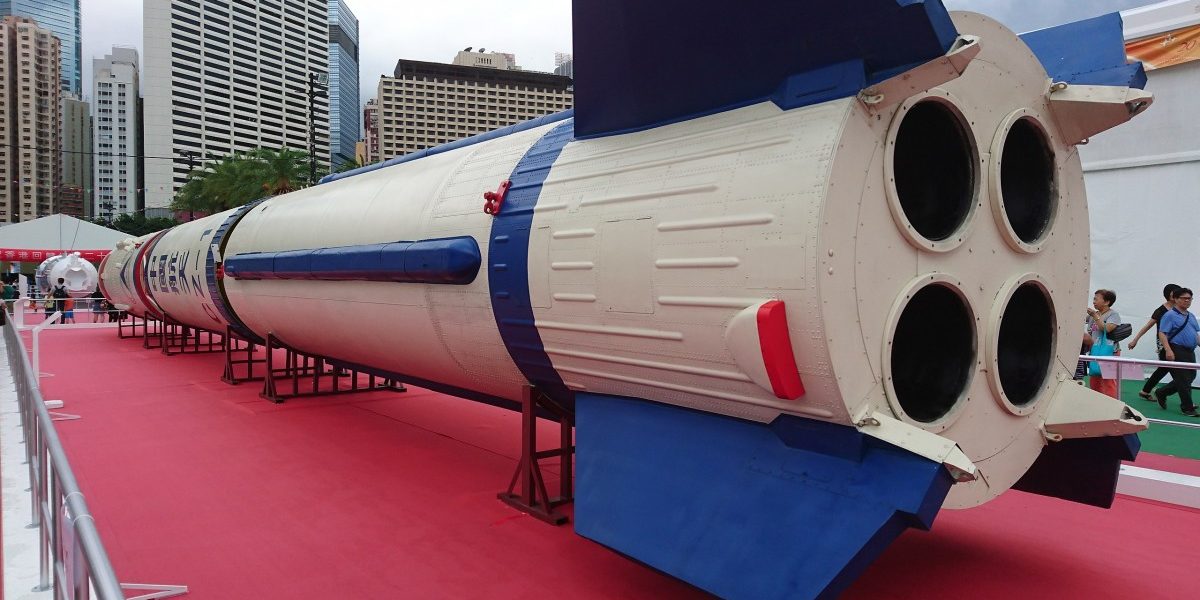China has tested their advanced hypersonic Fractional Orbital Bombardment System (FOBS) which two years back, would allow it to deploy nuclear weapons against any existing missile defence shield in the world. Chinese Space Warfare capability needs to be analysed to measure the existing threat perception.
Introduction
In the last decade, China is reported to have enhanced its space warfare capabilities. A new addition to its capabilities was demonstrated in the year 2021, when the Financial Times reported that in August 2021, the Chinese military launched a rocket that carried a hypersonic glide vehicle (HGV) which circled the earth and flew through low earth orbit before deorbiting and cruising towards its target. These types of systems are commonly known as the ‘Fractional Orbital Bombardment System’ (FOBS). The rocket which was supposed to be used for carrying this HGV was a Long March 2C (LM-2C) rocket, which the US experts believed was not announced by the Chinese, thereby adding to the concealment of this test.
Image: Long March-2C Rocket Source: https://www.cnsa.gov.cn/
Historical Development of FOBS
A FOBS specifically speaking is not any new type of weapon system which has been invented or is being developed by the Chinese now. The historical development of such systems took place in the Cold War era by the erstwhile soviet USSR. A FOBS is a rocket system carrying a payload (HGV) which is first placed in orbit, and before it completes a full revolution of the earth, the payload is released into the earth’s atmosphere to bombard its target. The payload is released into the atmosphere at a distance of 1/4th of the total distance of the orbit, therefore the term ‘Fractional Orbital’.
A string of successes for the Soviets led to the design of a rudimentary orbital bombardment system. The system tested in this series was designated the SS-X-6. The launch vehicle system was believed to be the SL-11. The capabilities of this system in a FOBS role were assessed as being able to place approximately 7200 pounds in low earth orbit and to re-enter a 2500 to 3100-pound payload with a circular error probability of between 1 to 3 nautical miles at ranges up to about 16,000 nautical miles.
Analysis of the Chinese FOBS test
In late November 2022, the Pentagon released some details about this Chinese FOBS test, stating that the HGV travelled almost 25,000 miles or 40,000 kilometres and reached hypersonic speeds in July 2021, where the HGV was reported to have travelled for a total flight time of roughly about 100 minutes which is the longest flight time of this system. As this test took place in July 2021 itself, the August 2021 test can be considered as a repeat test to improve the earlier results. This weapon has been reported to be developed by the China Academy of Aerospace Aerodynamics (CAAA).
CAAA is a research institute under China Aerospace Science and Technology Corporation (CASTC), the main state-owned company that makes missile systems and rockets for the country’s space programme. But till now both these entities have not commented on this test of 2021. As one can observe from the reports very little information can be gathered here because this test has been closely guarded by the PRC. We can observe that only the rocket type, distance travelled, time of flight, target objective, mission achievement, and the institute involved can be deciphered as per the Pentagon report and the Financial Times reporting.
Now regarding the rocket type, which belongs to the LM series of rockets, originally from the Cheng Zeng Family of rockets, is a product of the China Academy of Launch Vehicle Technology (CALVT) and is mainly used to deploy satellites to low-Earth and sun-synchronous orbits. The LM-2C is about 138 feet (42 m) in length and can use a number of upper stages for missions to sun-synchronous orbit (SSO). It can carry an 8,490-pound (3,850 kg) payload to the LEO. This information gives us a little hint of what could be the estimated weight of the payload (HGV) which is the object of interest.
Now hypothetically if we assume that the maximum weight of the HGV is around 2000 kg, then if tipped with a 1,850 kg conventional or nuclear fissile material will give it a blast yield capacity of more than what we have recorded in the Hiroshima and Nagasaki atomic bombings. This kind of explosion is enough to cause massive destruction, the kind of strategic results that a nation can expect when using a FOBS which was also planned by the leaders of the erstwhile Soviet Union against the USA.
The second takeaway coming from this test can be the estimated speed of the HGV which can be calculated from the parameters defined earlier. Simple Speed, Distance and Time formulas can be applied to estimate that the HGV+FOB system could have travelled at a speed of 6666.6 meters/second which is almost 19 times (Mach 19) the speed of sound (343 meters/second) and can be said to be travelling in the hypersonic regime (>Mach 5). Now this is the kind of HGV system which only Russia is said to have developed and now China reaching this speed can be a real game changer.
The third takeaway from this test is the target-hitting objective. While the system is reported to have missed its target by almost 25 miles, still the test could be considered a partial success for two reasons. One is that although the target was missed by a considerable distance, irrespective of that, the threat of the HGV entering the mainland with such a high speed is a sign of growing Chinese confidence to have a strategic system, because traditionally, FOBS is considered a strategic system.
Now if the FOBS is combined with an HGV, it becomes a lethal combination. So, whether the system misses its target by 25 miles or 1 mile is not a factor to be considered when the Chinese have plans to give strategic damage over a large period area. This also can be understood from the fact that when such a system uses a nuclear warhead, the mass destruction caused covers a large area, and thus missing the target shouldn’t be much of a concern for the Chinese, considering it was the first test and there are options available for its guidance correction.
The fourth and final takeaway from this test has global ramifications. The US Intelligence was caught by surprise when this test occurred. So, it will also be incredibly difficult for other nations’ intelligence apparatus to detect the launch of such systems in war or peacetime. So going forward in future, it will be difficult to know if any blast-off of a Chinese Rocket is for a peaceful, civilian space launch or a belligerent military strike, inserting ambiguity into the defender’s decision-making process. It could also increase the risk of strategic misperception, miscalculation, and mistakes; an unacceptable situation involving nuclear weapons states.
Concern for the US and Allies
During a US House Armed Service Subcommittee on Strategic Force hearing conducted in 2022 by the US Space Command, the members acknowledged the threat of this Chinese intercontinental committee, which was concerning to all of its members. They openly raised questions about the US’s current investment in deterrence capability to assure their allies and deter their enemies.
Michael Gallagher, a Republican member of the House Armed Services Committee indicated that Phytium, a Chinese technology company uses US-derived technology to power a military supercomputer that models hypersonic flight. While the Biden administration rightly placed Phytium on the Commerce Department’s Entity List, it has not applied the Foreign Direct Product Rule that was successfully used to counter Huawei. As a result, US-derived technology produced by TSMC still enables Phytium’s malign work.
On the defence aspect, intercepting such FOBS would be very challenging, especially considering US mid-course intercept capabilities are focused on traditional ballistic missiles, which follow a parabolic trajectory and have generally known ranges of each stage of flight. It is also a known fact that US missile defences were only designed to protect against attacks from countries with more limited nuclear arms inventories, i.e. North Korea and Iran; not China or Russia.
Proposed Countermeasures
No nation currently possesses any unique capability to counter such systems. Due to this, the US would like to reconsider current approaches to deterrence and missile defence. The US is looking to increase its space and ground-based sensors to track and detect such systems. Fielding advanced interceptors and non-kinetic systems such as high-powered lasers (HPM) are also being considered. Dedicating more personnel to the air-and-missile defence mission, acquiring more software to improve networking, and buying “off-the-shelf” systems that are currently available an options on the table for the US. Other passive defence strategies could include building additional infrastructure so vulnerable forces could be dispersed; hardening air bases and other critical sites; camouflage, concealment and deception; and deploying reconstitution capabilities to enable faster recovery from an attack.
Conclusion
This FOBS test should be a wake-up call for India to start preparing to counter such systems in future because India has direct border disputes with China, and the threat of a conflict with China on misconceptions can’t be ruled out in future.
Disclaimer: The views and opinions expressed by the author do not necessarily reflect the views of the Government of India and Defence Research and Studies
Title Image Courtesy: The Wire





